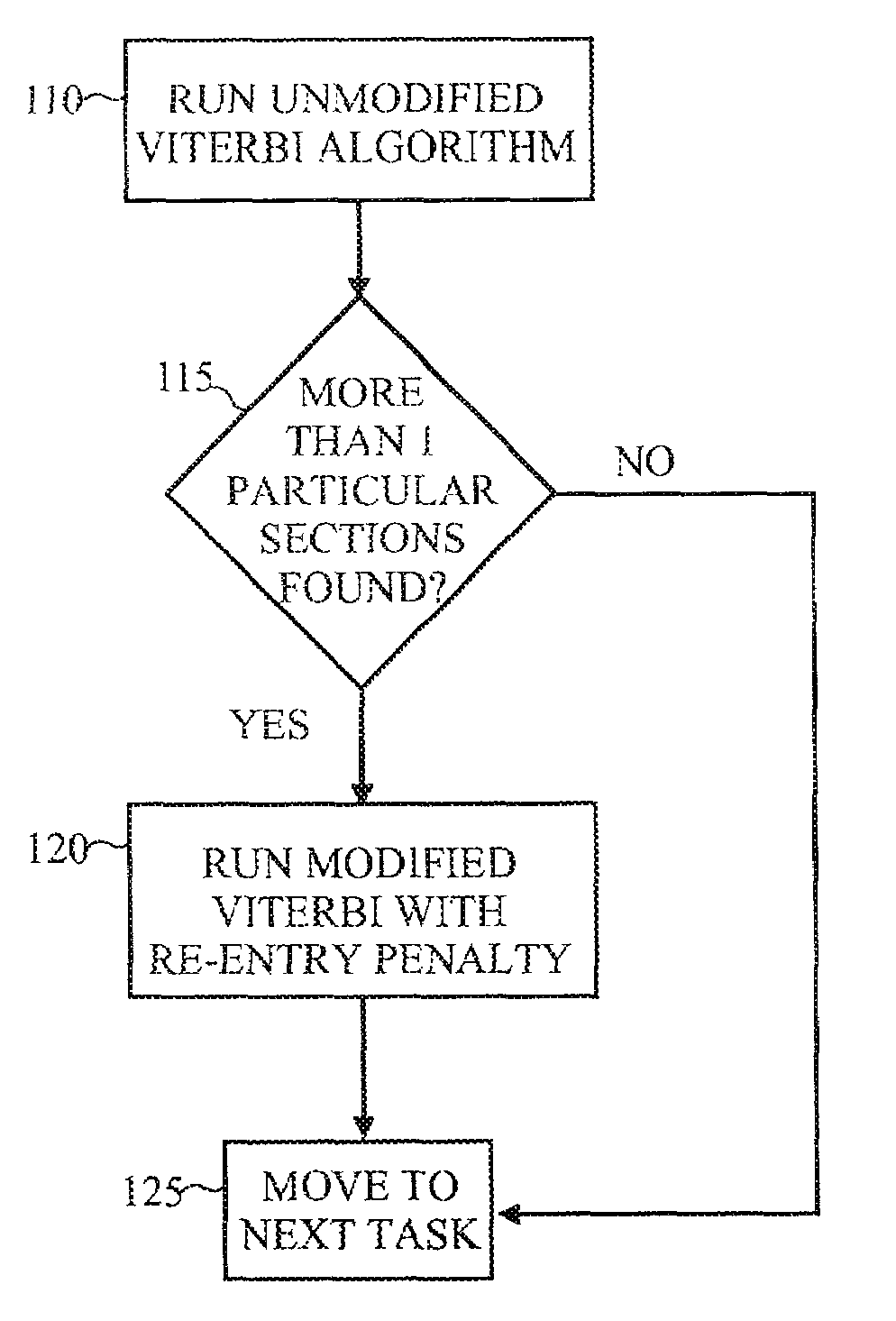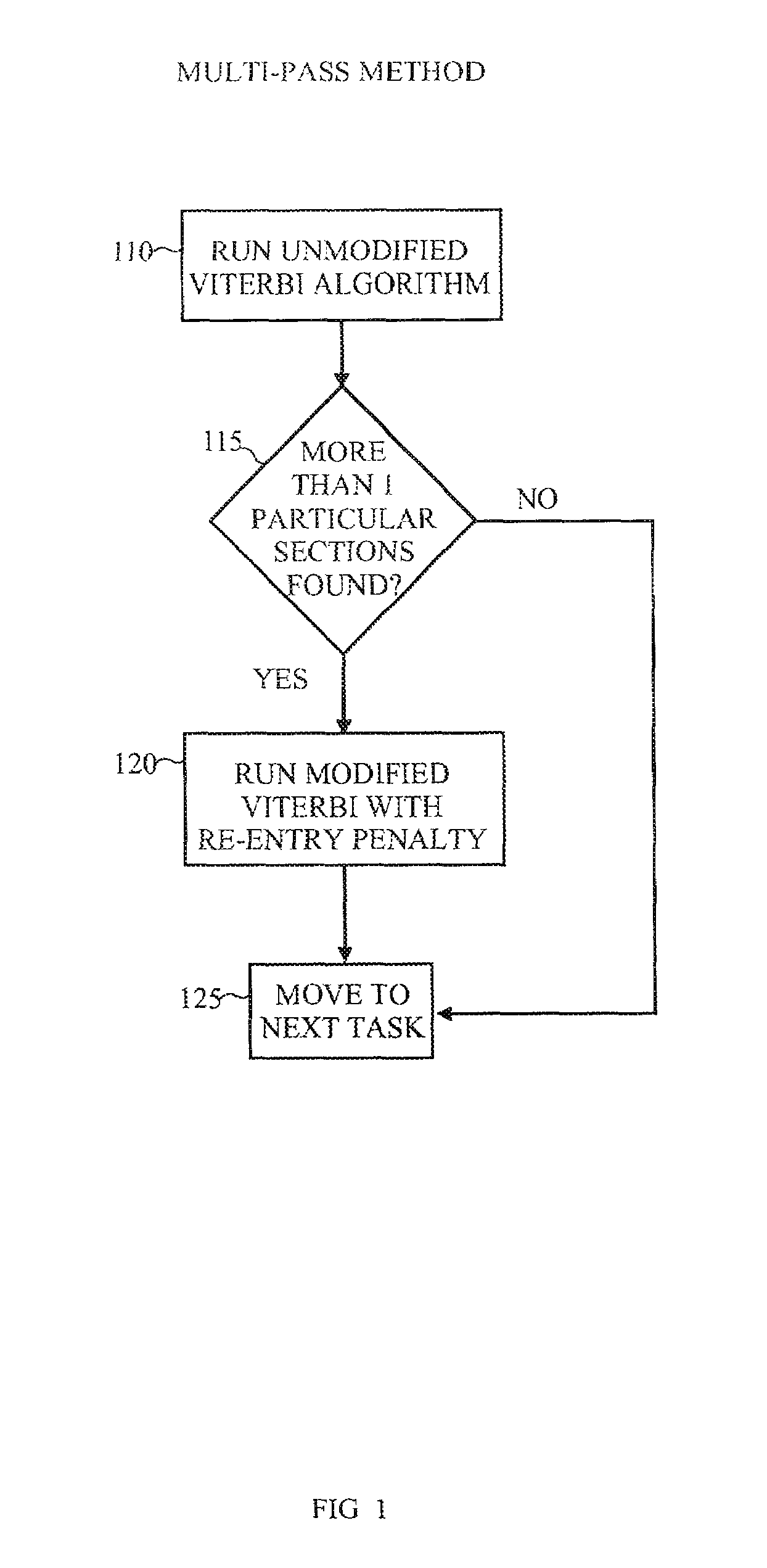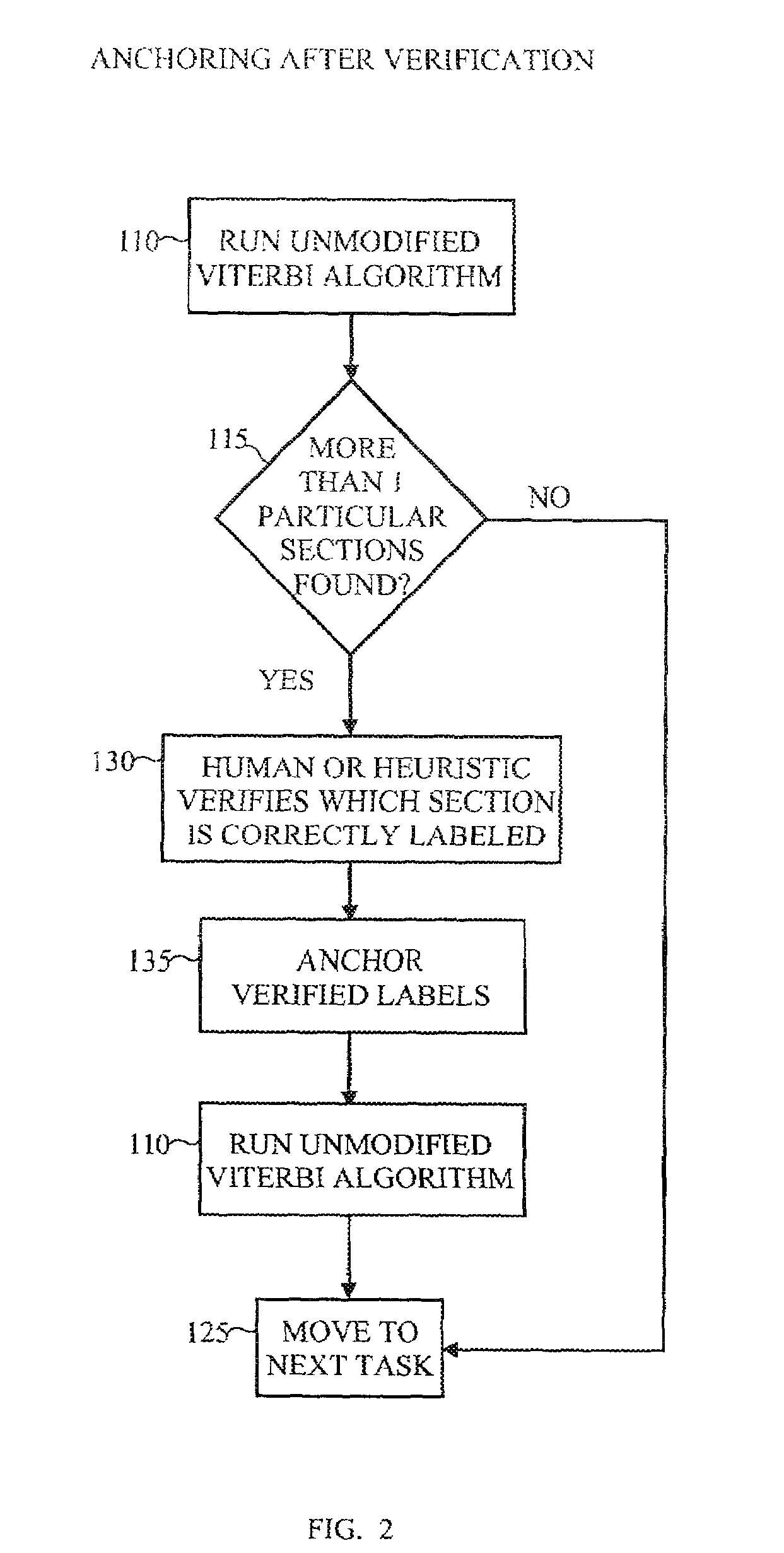Method for improving results in an HMM-based segmentation system by incorporating external knowledge
a segmentation system and knowledge integration technology, applied in the field of statistics, can solve problems such as unjustified statistics in many application domains, unwieldy manual model structure for anything but small local contexts, and the negative effect of enlarging the model
- Summary
- Abstract
- Description
- Claims
- Application Information
AI Technical Summary
Problems solved by technology
Method used
Image
Examples
Embodiment Construction
[0015]The inventive systems and methods provide for encoding information that would otherwise be lost under the Markov assumption. The method does this by expanding the state space of the Viterbi algorithm, which is invoked when applying the HMM to tag a new object. Structural domain knowledge is thus incorporated into the algorithm to track if a state or set of states has been previously visited. By means of a multiplicative factor, or “constraint,” re-entry into a given set of states can be encouraged or discouraged, or even required or prohibited.
[0016]For concreteness and clarity the discussion that follows will use an exemplary environment of tagging a resume, but the use of this example is in no way intended to limit the use of the invention, which has application in the segmentation of many kinds of discrete time-series data sequences. The example disclosed will show, in particular, how to discourage multiple identifications of a given set of sections in a resume, but it can ...
PUM
 Login to View More
Login to View More Abstract
Description
Claims
Application Information
 Login to View More
Login to View More - R&D
- Intellectual Property
- Life Sciences
- Materials
- Tech Scout
- Unparalleled Data Quality
- Higher Quality Content
- 60% Fewer Hallucinations
Browse by: Latest US Patents, China's latest patents, Technical Efficacy Thesaurus, Application Domain, Technology Topic, Popular Technical Reports.
© 2025 PatSnap. All rights reserved.Legal|Privacy policy|Modern Slavery Act Transparency Statement|Sitemap|About US| Contact US: help@patsnap.com



